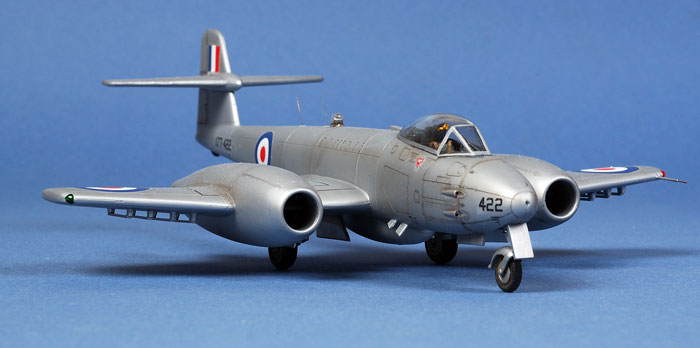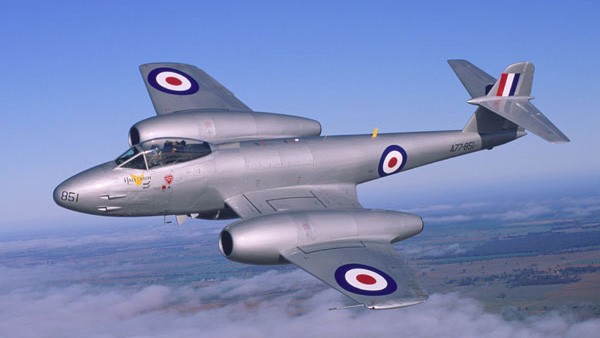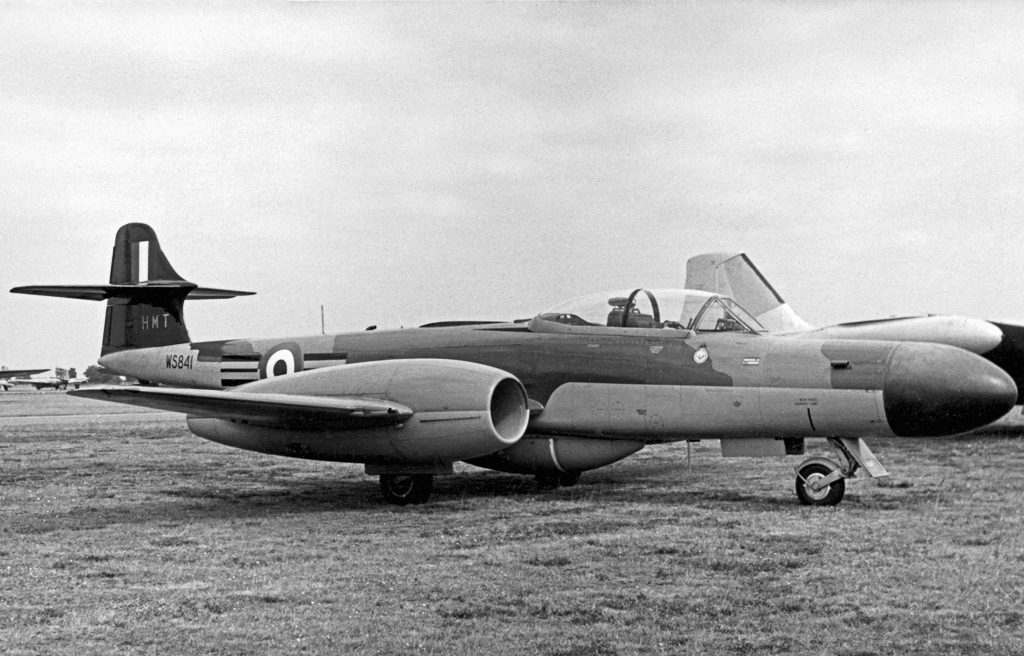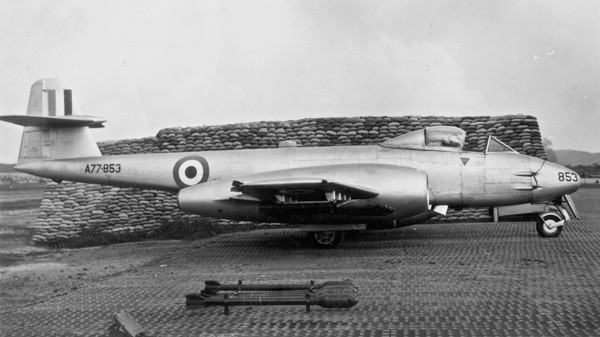
During World War II, the Gloster Meteor emerged as the first British jet fighter and the only jet-powered aircraft among the Allies to see combat action. Following the war, the British sought to further their jet technology, leading to intriguing experiments, such as the development of the Gloster Meteor F8 WK935, a revolutionary aircraft designed to be piloted in a prone position.
The concept of a prone cockpit, where the pilot would fly lying down, stemmed from the idea of minimizing drag by extending the aircraft’s nose. Additionally, this position was believed to enable pilots to better endure the intense g-forces experienced during high-speed maneuvers compared to the traditional upright seating arrangement.

The Reid and Sigrist R.S.4 “Bobsleigh” emerged as a predecessor, a unique experimental aircraft that tested the effects of g-forces on a pilot in a prone position. However, the Royal Air Force (RAF) desired an even faster testbed for studying higher g-forces, leading to the development of the Gloster Meteor F8 WK935.
The modifications made to the Gloster Meteor F8 WK935 were carried out in-house, with the addition of a custom-built couch, controls on either side of the pilot, and suspended rear pedals. The original cockpit was retained, and the tail section was replaced with that of a Meteor NF 12. An escape hatch was included behind the cockpit, allowing pilots to bail out in emergencies, although the process was complex.

The aircraft was powered by two Rolls-Royce Derwent 8 centrifugal-flow turbojet engines, reaching a maximum speed of 600 MPH at 10,000 feet, with a service ceiling of around 43,000 feet. Pilots lay on their stomachs at a 30-degree incline, with their chin and arms resting on specialized supports, and operated controls conveniently within reach.

The experimental aircraft took to the skies for the first time on February 10, 1954, piloted by Ar Armstrong-Whitworth Chief Test Pilot Eric George Franklin. Over 55 hours of flight testing occurred during 99 flights, with inconclusive results. While the prone position seemed effective in managing g-forces, it presented various challenges. RAF test pilot C.M. Lambert achieved 6g in a loop without blacking out, but ejecting while prone was complicated, and flying in turbulence proved uncomfortable.

Ultimately, the development of g-suits offered a similar solution to managing g-forces, rendering the prone position unnecessary. The limited rear view and potential combat challenges associated with the prone position led to the retirement of the Gloster Meteor F8 WK935. The aircraft found its final home at the Royal Air Force Museum Cosford, where it remains on display as a testament to innovative experimentation in aviation history.







